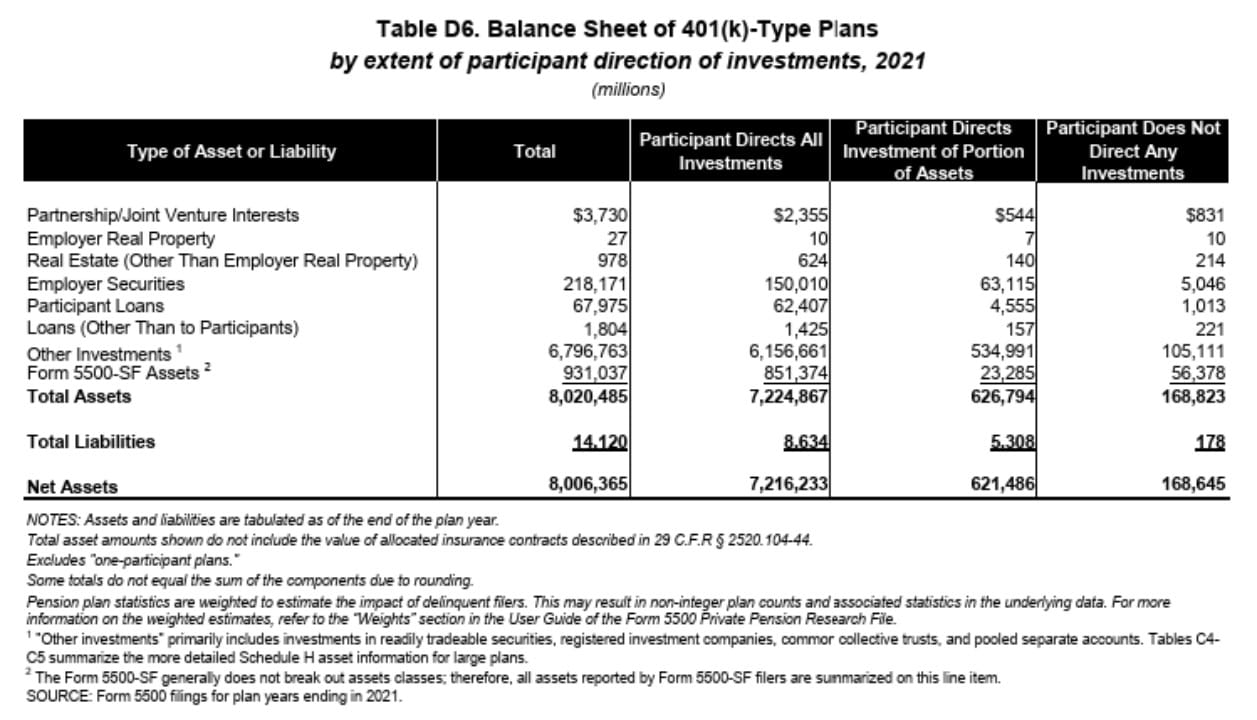Author | SoSoValue
On August 7, Trump signed an executive order that expanded the investment menu of America's largest retirement pool—401(k) plans—from a 'traditional three dishes and a soup' to an 'alternative buffet.' New options include private equity, real estate, and digital assets (like Bitcoin, Ethereum, etc.). This is a historic first, allowing up to $9 trillion in long-term funds covering 90 million Americans to start accessing the crypto market. Although it may take six months to two years for this 'elephant' to fully enter, once it starts to slowly move, this stable and lasting buying power may be the source of a 'slow bull' market for crypto in the future.
What is a 401(k) retirement plan: initiated by employers, participated in by employees, automatic deductions, long-term savings
A 401(k) is a long-term retirement savings account provided by American employers, offering tax advantages. Employees can invest part of their salary without paying taxes upfront, directly into this account, and withdraw it for spending upon retirement. Employers will prepare an investment list (usually containing 20-30 funds), and employees decide how much of their salary to contribute (for example, 6%), then select funds and allocation ratios from the list. The salary will be automatically deducted, and employers usually match contributions to some extent—as a benefit.
Decision-making authority of the 401(k) plan: employers have the final say, acting as 'cautious guardians'
In a 401(k), employers have significant authority to decide which funds are included in the list, and employees can only choose from the list without adding their own options. When selecting fund companies or custodial institutions, employers must adhere to the 'prudent man rule'—essentially, they must manage it as carefully as they would for their own family. If poor choices lead to employee losses, employers may bear legal liability.
The scale of the 401(k) plan is enormous: nearly $9 trillion, with over 90 million participants
According to data from the U.S. Department of Labor, the total assets of 401(k) plans were about $8 trillion in 2021; statistics from the Investment Company Institute indicate that by the first quarter of 2025, this number will have risen to $8.7 trillion. The White House also revealed that over 90 million people in the U.S. are already using this plan.
How significant is this change?
•·Historic first: Previously, there were no crypto assets on the 401(k) investment list; this time, the policy has opened the door for the first time.
•·Potential funding pool: Even if only 2% of 401(k) funds flow into crypto, based on $9 trillion, that amounts to $170 billion in new buying—while currently, the total for global crypto spot ETFs and listings is only about $260 billion.
•·Market impact: Once such long-term funds enter the market, it could significantly change the structure of the crypto market—shifting from short-term speculation to a price discovery process more reliant on long-term funding, forming a steady upward 'slow bull' pattern.
Analyst view: Even if 401(k)s only contribute 2% of pocket money, the crypto market could instantly gain $170 billion—this is almost equivalent to two-thirds of the current total of crypto spot ETFs and listings.
Funds need to go through three steps to land
Don't rush to celebrate; the money won't pour in tomorrow, with an expected landing period of at least six months to two years:
•·The Department of Labor will first issue detailed rules clarifying how 401(k) plans can invest in alternative assets, including proportion limits and product disclosures.
•·Service providers will design fund products that comply with the rules, incorporating crypto assets.
•·Employers will decide whether to add these new funds to the investment menu, and employees will then decide whether to allocate to them.
Which types of crypto assets are most likely to be included first?
Crypto spot ETFs are the most likely candidates due to their SEC regulation, strong compliance, stable custody, and valuation mechanisms, along with good liquidity. They are likely to be included in target date funds (TDF) or balanced funds, with proportions possibly below 5%, but the impact will still be significant.
Why is this different from 2020?
In 2020, the Labor Department under Trump also hinted at allowing 401(k) plans to access private assets, but since it was a departmental initiative combined with the poor liquidity of private assets, the outcome was minimal. This time is entirely different:
•·The president personally signed the executive order, providing greater authority.
•·Crypto ETFs have good liquidity and high acceptance among retail investors.
•·Policy coordination with the Treasury, SEC, and other parties reflects true top-level design.
The market is already reacting
According to SoSoValue data, the MAG7 index token, which includes the top seven tokens, has increased nearly 5% in the past 24 hours, outperforming Bitcoin by 15.58 percentage points over the year—indicating that while funds have yet to arrive, the market's imagination has already arrived.
The $9 Trillion Elephant Enters Crypto: Can Trump Ignite a 'Slow Bull' Marathon?
Disclaimer: Includes third-party opinions. No financial advice. May include sponsored content. See T&Cs.

BTC
116,812
+2.08%

ETH
3,930.63
+7.30%
196
0
Explore the latest crypto news
⚡️ Be a part of the latests discussions in crypto
💬 Interact with your favorite creators
👍 Enjoy content that interests you
Email / Phone number
